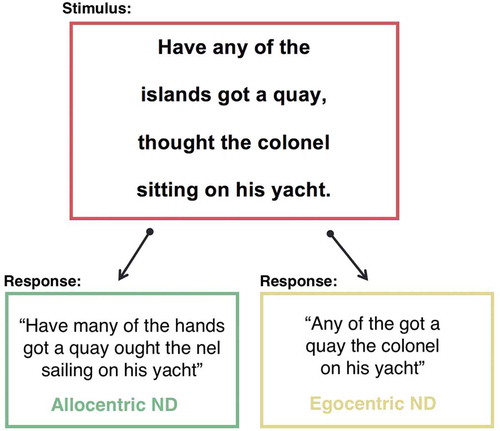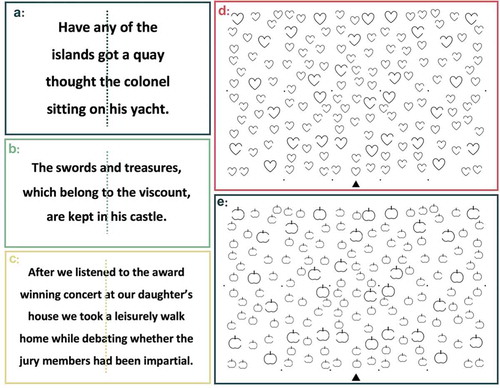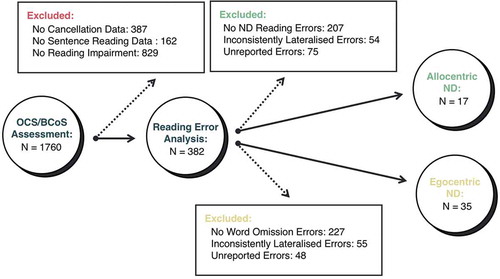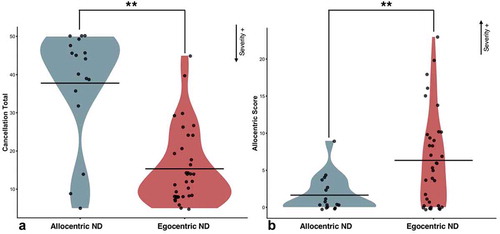Figures & data
Figure 1. An illustration of the differential reading error pattern observed in patients with neglect dyslexia and sentence-level neglect. ND = Neglect Dyslexia.

Figure 2. OCS and BCoS Reading Tasks and Cancellation Task stimuli. (a) and (d) are OCS stimuli while (b,c) and (e) are taken from the BCoS. Cancellation Task scoring gridline locations are denoted by the black dots within the search matrix. Sentence midpoints are denoted by dotted lines. These lines are not present during task administration, but were used to score patient performance. According to BCoS scoring guidelines, one point is assigned for correctly reading “daughter” and another for this word’s corresponding possessive suffix.

Figure 3. A visualization of the neglect dyslexia and sentence-level neglect patient identification process and patient exclusion counts at each stage. ND = Neglect Dyslexia.

Table 1. Demographics for patients with neglect dyslexia and sentence-level neglect. Unreported patient information represents missing demographics which were not recorded in medical notes. R = Right, L = Left, B = Bilateral, M = Male, F = Female, Isc = Ischemic, H = Hemorrhage, TIA = Transient Ischemic Attack.
Table 2. Neglect dyslexia patient Reading Task and Cancellation Task performance along with basic stroke information. ICH = Intracerebral hemorrhage, TIA = Transient Ischemic Attack, NR = not reported in medical notes. ND = Neglect Dyslexia. On the cancellation task, Ego denotes the egocentric asymmetry, Allo denotes allocentric asymmetry. In both asymmetry scores positive scores reflect left-sided neglect, and negative scores reflect right-sided neglect impairments. Asterix represent significant impairment.
Figure 4. Differences in egocentric severity (Panel A) and allocentric severity (Panel B) between patients with neglect dyslexia and sentence level neglect. Low cancellation totals represent more severe egocentric impairment. High allocentric scores represent more severe allocentric neglect. ** = p < 0.01. Shaded areas illustrate the distribution of data points.

